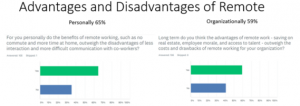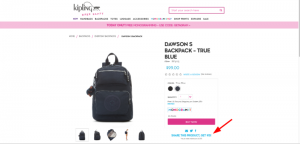The Geena Davis Institute for Gender in Media is partnering with creative analytics platform CreativeX to give brands the ability to measure representation across all their advertising content.
“The vast majority of people, when they look at ad content, say they don’t see themselves in it, they don’t see themselves represented. We spend all this time and money telling stories and yet most of the people who look at them don’t see themselves in it. Not only is this clearly inefficient, it’s also quite alienating.” Comments from Anastasia Leng, founder and CEO of CreativeX.
CreativeX’s software provides AI-powered analysis of visual content — images and video — at scale, enabling brands to make data-driven creative decisions, supporting quality, brand consistency and compliance. Recently, it has turned its attention to driving insights into representation in partnership with Geena Davis Institute for Gender in Media. The Institute’s mission is to create gender balance, foster inclusion and reduce negative stereotyping in family entertainment and media. Creative X isn’t just looking at gender, however. “We’re looking at gender, skin tone and age range,” said Leng.
The state of representation
Using its proprietary Representation technology, CreativeX last week released results from an analysis of some 3,500 ads containing images or video (from 2021 and U.S. only). Among the findings:
- Although 55% of ads featured women, men were 1.5X more likely to be shown in professional environments;
- Individuals with light to medium skin tones featured twice as often in professional environments; and
- Individuals in the over-60 age range featured hardly at all (around 1% of the ads) despite their formidable disposable income.
Madeline Di Nonno, CEO of the Geena Davis Institute explained: “What we have found is that, since 2016, there has been a very serious intent by some of the leading global brands – like P&G, Google, Facebook, Mars – to invest in people, to invest in resources and invest in process in order to come up with ways for them to not only absorb the information, but for them to figure out what’s going to work so that we can have improvements.”
Leng confirmed this from her experience with her own clients. “The intentions are there. The other big trigger is that consumers are pushing them in the right direction. Consumers care more than ever.”
So what’s the problem?
The problem is scale
One of the major obstacles to meaningful change is the scale and complexity of ad creative when it comes to global brands like the ones Di Nonno referenced — brands with significant influence on the culture. “It’s been very challenging, especially when you’re dealing with global organizations and you have different regions, different entities around the world. These infrastructures are so big. How many brands, how many ads per brand per year? You’re talking about thousands and thousands, and the pace is so fast.”
That’s where CreativeX comes in, with its use of AI to automate the analysis of vast quantities of creative. “We connect all the different places where they’re running advertising to our system. This then allows us, via APIs, to pull in all of their content. What we then do is look through all their images and videos and basically append a bunch of metadata that helps us determine everything from who is in the creative – what kinds of people – all the way down to what settings they’re in, percentage of men versus women, under 21, over 60, and differences around stories you are telling about men versus women.”
It’s easy for brands to find excuses, Leng said. “You do a bit of research on a small sample size and people say, ‘But you didn’t look at all my content.’ In this case, we’ve taken those excuses off the table. We can look at all your content.” For some large brands CreativeX has so far looked at U.S. content only, Leng said.
She added: “We had an instance of one brand which said ‘We are the most diverse financial brand on the high street.’ We looked at all of their content – tens of thousands of pieces of content – and there was not a single person of color in a single one of their ads.” An extreme example, she admits. “The reason I talk about it is not because they were lying to us, not because they didn’t care, but when you have a large brand with thousands of marketers distributed across multiple locations, and a bunch of agencies, unless you have the systemic infrastructure to track this – everyone thought they were being diverse but no-one was actually doing it.”
The goal is systemic change
CreativeX and the Geena Davis Institute happen to share some clients, but the way the partnership is intended to work is that Geena Davis can introduce major global media and entertainment brands to the potential of CreativeX’s technology, while CreativeX can point its clients toward the Institute for advice and counseling on their representation policies.
Ultimately, the goal is to drive systemic change, said Di Nonno. “We’ve been doing what we define as narrative culture-change work since 2004, we’ve had the privilege of being able to expand across many global verticals. We started doing global work in advertising in 2015, a result of me having the privilege of being the second jury president for the Glass Lions.” (The Glass Lion “recognises work that implicitly or explicitly addresses issues of gender inequality or prejudice, through the conscious representation of gender in advertising.”)
“However, as a research institute that is data-driven,” she continued, “when you think about the massiveness and volume of global advertising, to really come up with a turnkey, systemic auditing solution, there’s no way we could ever scale to be able to embrace that. So, with Creative X having created their representation project and having the opportunity to join forces, it really allows us to continue to do what we’re doing but also to have that scalability.”
The post Measuring diversity in advertising: A challenge of scale appeared first on MarTech.
MarTech(50)
Report Post







